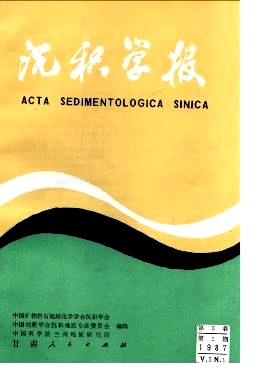IDENTIFICATION OF CLAY MINERAL MIXTURE BY FOURIER TRANSFORM INFRARED SPECTROMETRY
- Received Date: 1986-01-22
- Publish Date: 1987-03-10
Abstract: Before the introduction of the Fourier transform infrared (FTIR) spectrum, X-ray diffraction was probably the best method for the identification and guantitatire analysis of clay mineral mixtures. But the method is limited by problems of the overlaying diffraction peaks and mineral orientation, particularly to the clay mineral. The dispersive infrared spectrum is also limited by the overlaying andi superposition of the bands of complex multicomponent systems. The introduction of the FTIR spectrum promises to improve the routine mineral analysis. This paper deals with the procedure of the sample preparation for the FT-IR differential spectrum and quantitative analysis of clay mineral mixture samples, and discusses the following problems: 1) It is generally accepted that the attainable maximum ratio of signal and noise the FTIR spectrum is determined by the digitization noise system of the minimum significant bit (LSB) in the analog/digital (A/D) converter. The signal/noise ratio(SNR) of a 100% line is formed by proportion, and then the final equation should be Here△vis the resolution ratio, γmax and γmin are the two opposite extremes of the observed wavenumber range, C is the cumulative number of scanning, b is the changing range in bits of the A/D converter, f is the safety margin between the largest measured signal and the saturation of the converter, and M is the ratio between the spectral intensity of measuring wavenumber and the mean value. According to this theory, the equations of the differential spectrometry and the differential quantitative method have been further confirmed in practice. 2) The mixed spectrum of kaolinite including trace illite is very similar to that of pure kaolinite because of the strong absorption of kaolinite. However, applying FTIR, we can use the computer to digitally subtract the known standard spectrum of kaolinite from the mixed spetrum so as to get the differential spectrum, which can now be identified as the illite spectrum, Chlorite and kaolinite spectra are very similar, too. We also obtained each pure spectrum from mixed spectrum by using the FTIR differential spectrum. 3) As mentioned above, we performed the quantitative analysis on clay mineral mixtures by using the FTIR differential spectrum. The results show that the relative stancard deviation of five clay mineral mixtures is less than 3%. The concentration of five absorbed frequancy measurement has an average error of only 0.2-0.5%. This study clearly proves that the FTIR differential spectrum is feasible for the clay mineral mixture.
| Citation: | Zhou Yanru. IDENTIFICATION OF CLAY MINERAL MIXTURE BY FOURIER TRANSFORM INFRARED SPECTROMETRY[J]. Acta Sedimentologica Sinica, 1987, 5(1): 37-47. |






 DownLoad:
DownLoad: